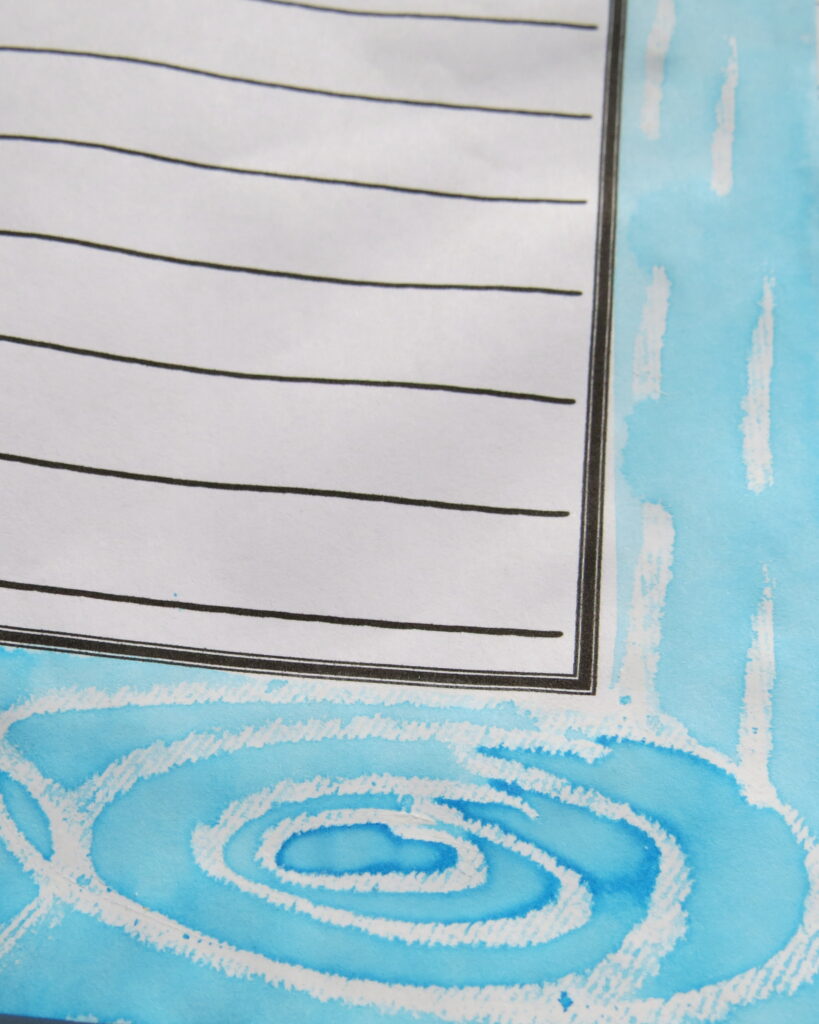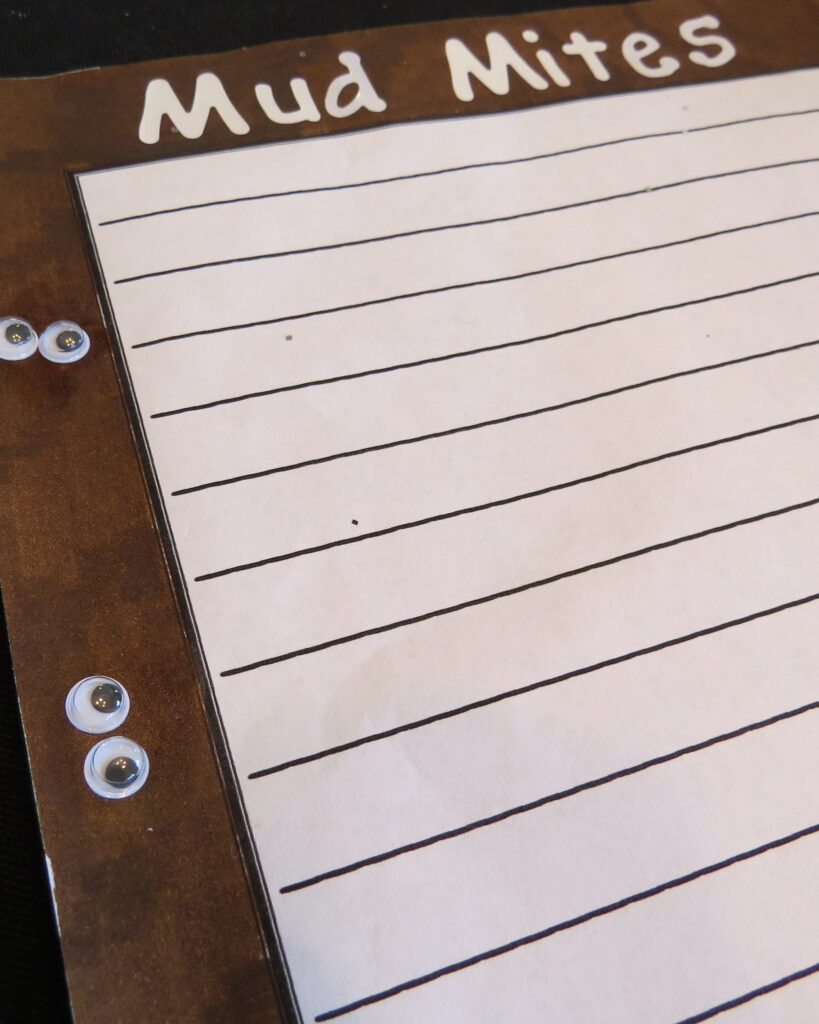We used this green grass art accent after completing the humorous guided writing lessons titled, Grumpy Grass and A Serval’s Personal Narrative.
These easy art accents are surprisingly simple. They motivate writers and reward them for their work. Additionally, they add color and charm to any child’s story.
*This post contains affiliate links. For more information, see my disclosures here.*
A Serval in Grass
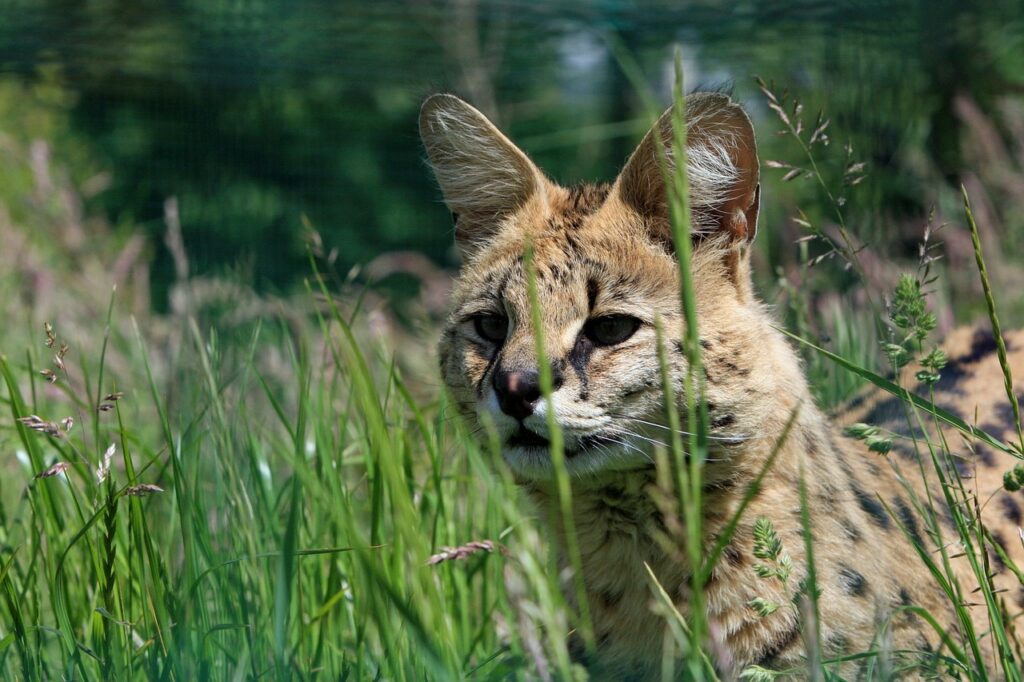
For the Serval’s Personal Narrative writing prompt, we focused on the tall grass for our art accent since most of the campers wrote about how silly it was for the humans to cut the grass. The serval kept waiting for the grass to grow long and the humans kept cutting it!
Green Grass Art Accents
Choose from any of the 4 ideas below to add green grass around the border or your story. Number 3 is most unique!
Bordered Paper
For all of my writing classes, students write on bordered paper. As a result, they can decorate the border around their writing with an easy art accent.
You can print and use this paper as well. Here is the paper for Grades K-2 and Grades 2-7. Here’s a printout of a border with no lines to use with very early writers like in the sample above.
Acrylic Paint
- One idea is to simply paint lines of green acrylic paint around the border. Students can use a q-tip or paint brush to paint the grass. Additionally, they can write the title with paint.
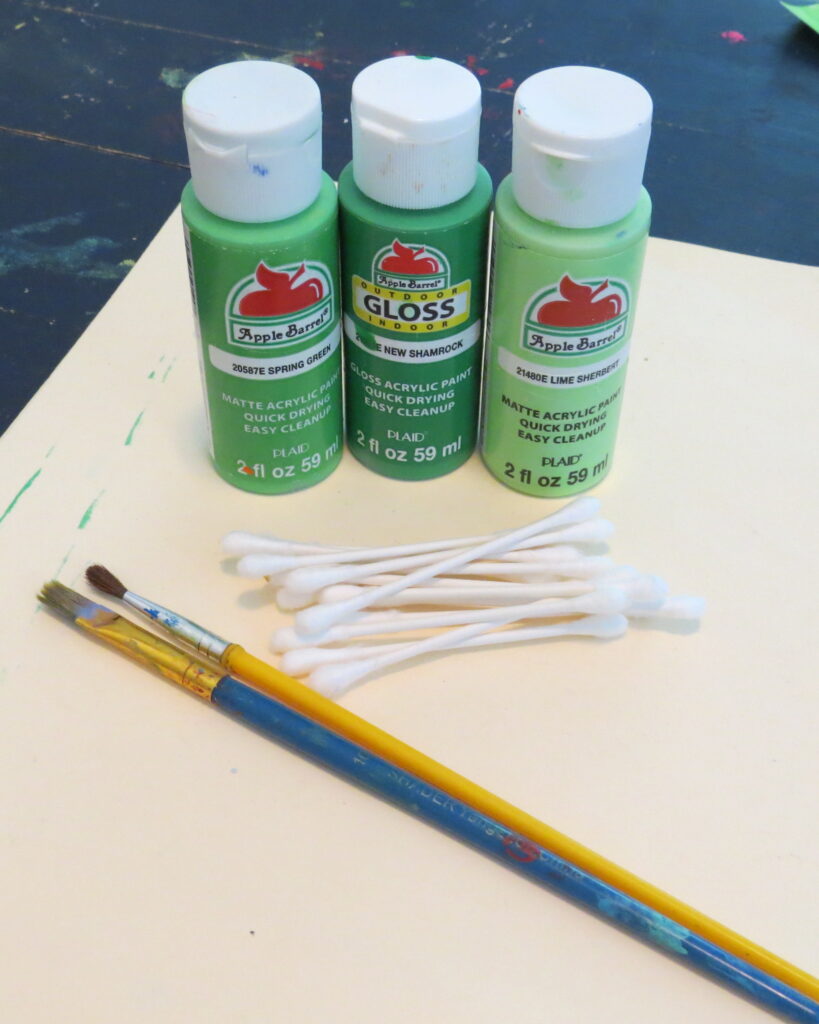
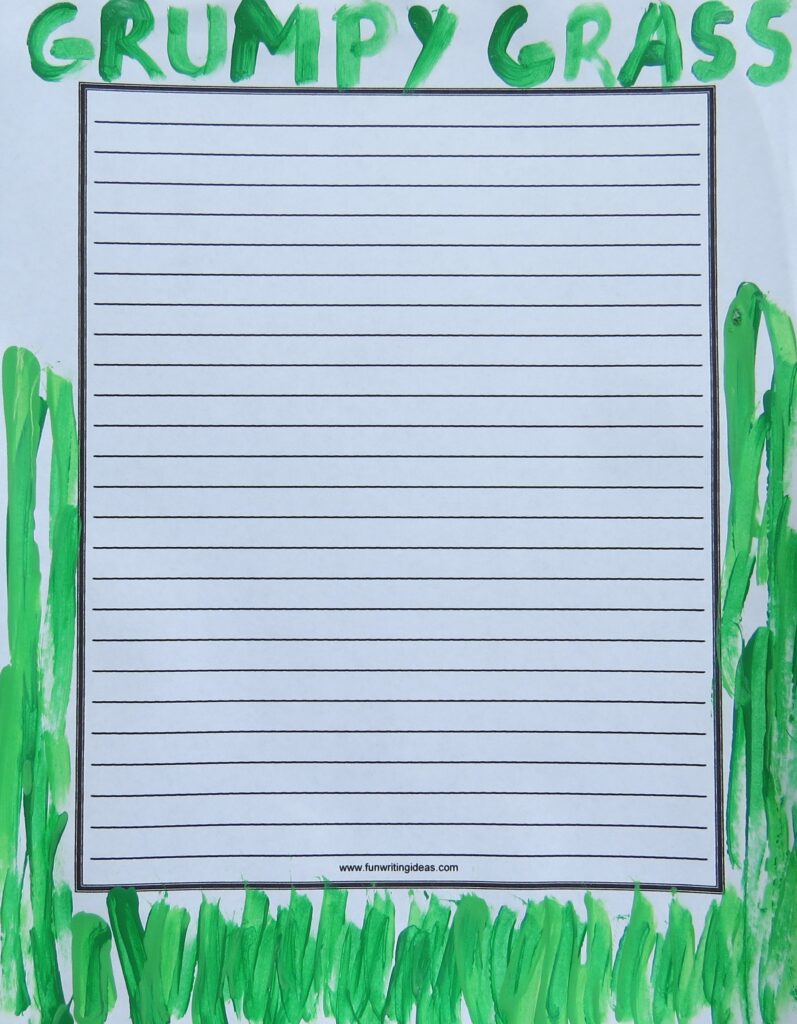
Gray Grass
To go along with the Fictional News Article writing prompt titled, “Grrr….Grass”, a student may choose to incorporate gray grass. In that case, that student could use gray acrylic paint to paint gray grass around the border.
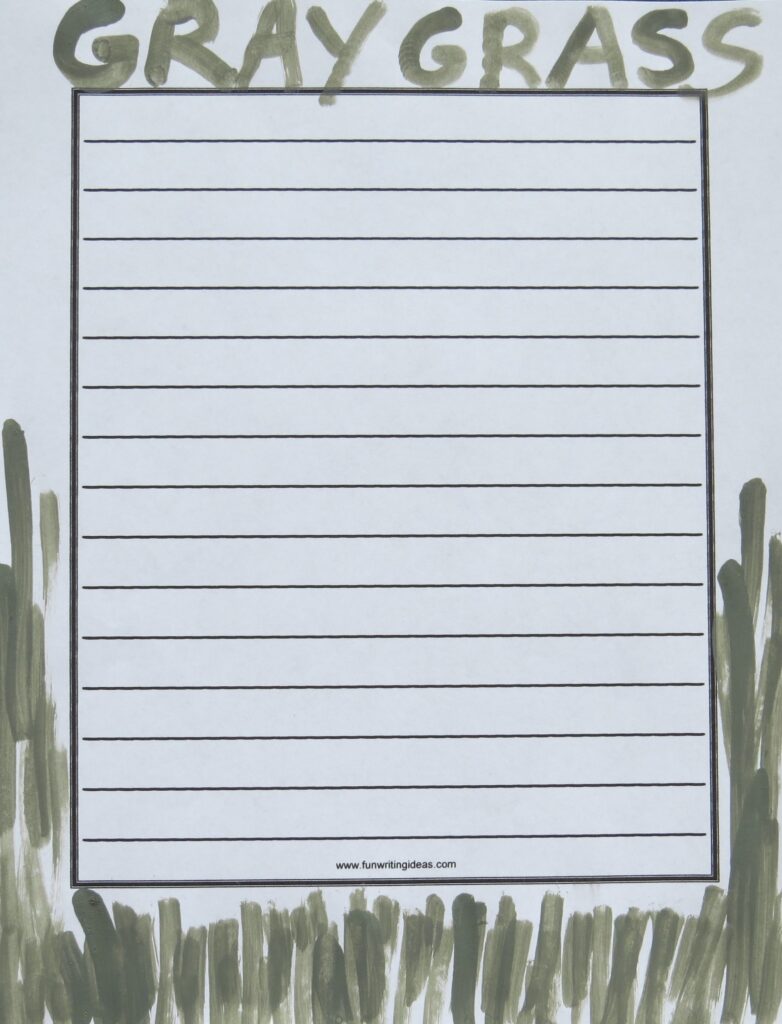
White Crayon and Watercolor Paint
2. The second art accent is really easy also. All you need is a white crayon, green water color paint* and water.

First, use the white crayon to draw grass lines around the border. The pen marks below show where students can draw the grass.

Next, paint the entire border with green water color paint. The white crayon lines will show through, making it look like grass.


Here’s a sample to print and hang.
Plastic Page Protector, Tempera Paint and Mod Podge
3. The third art accent is surely unique and I discovered it by sheer accident. I learned that you can brush tempera paint on a a plastic page protector*.
First, take the page protector.

Second, lay it down so that the white holes are on the RIGHT and the opening is at the top.

Third, brush the green tempera paint* vertically, from top to bottom over the plastic page protector.


Fourth, spray it with Mod Podge*.

Fifth, let it dry.
This art accent goes very fast. The drying just takes a bit of time. While it’s drying, the children can draw a picture to go along with their story.
Finally, if you store this story in a binder or three ring folder, the story should be facing up in the plastic page protector (holes on the left). The drawing and paint should be facing down or on the back. The child’s illustration will be behind the green paint.
The Serval Sample
For the serval story, children can draw a serval (or color a serval like this one) to place in the plastic page protector behind the green paint. The green paint looks like tall grass hiding the serval.


Here’s the image above for you to print out and hang for your students.
Green Marker
4. Most simply, color the border of the story green.
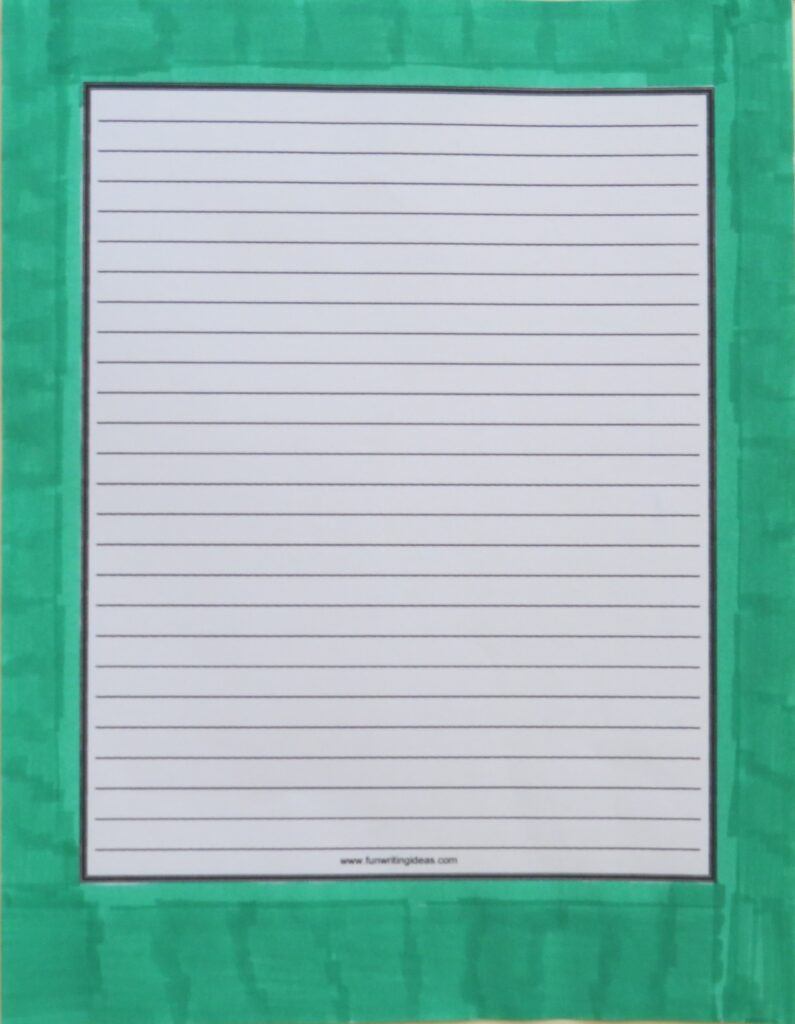
Googly Eyes
5. If you have googly eyes of any size, glue them onto the green border. These googly eyes could represent tiny little critters, creatures or people causing havoc in the grass.
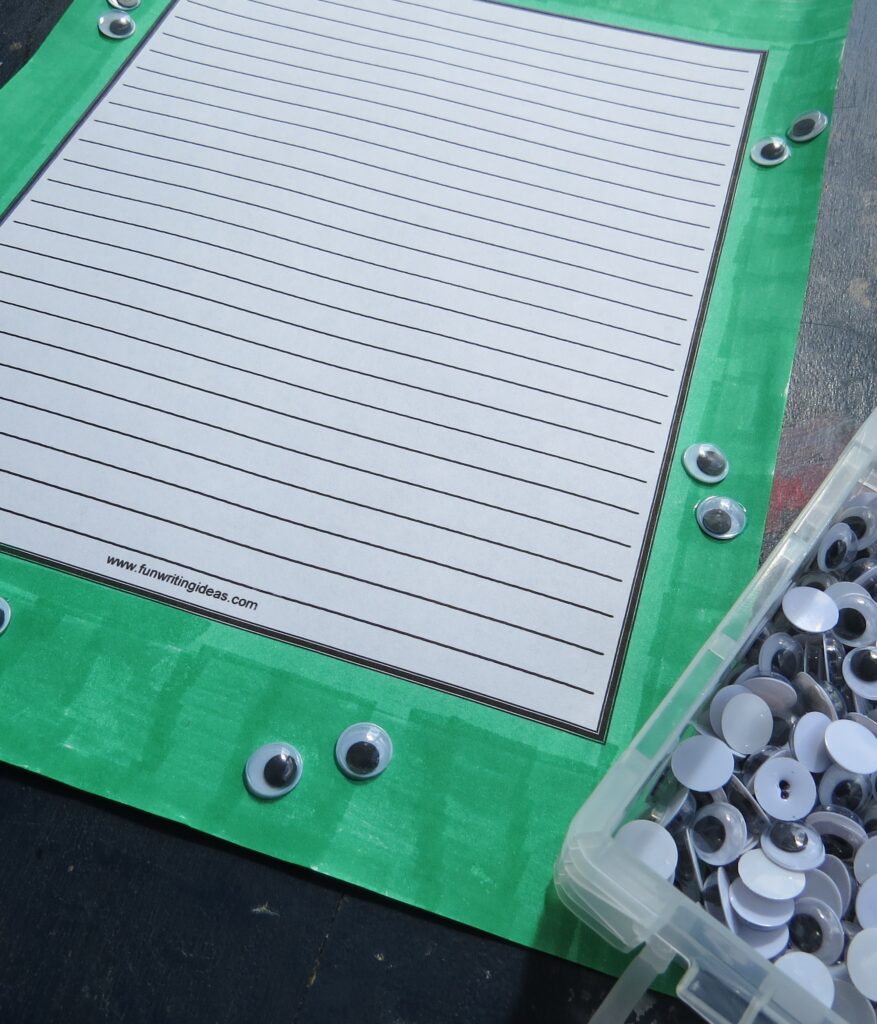
In addition, big googly eyes could go along with a title like, “Grizzly Grass”. Perhaps a monstrous creature grows from the grass or is drawn to grass.
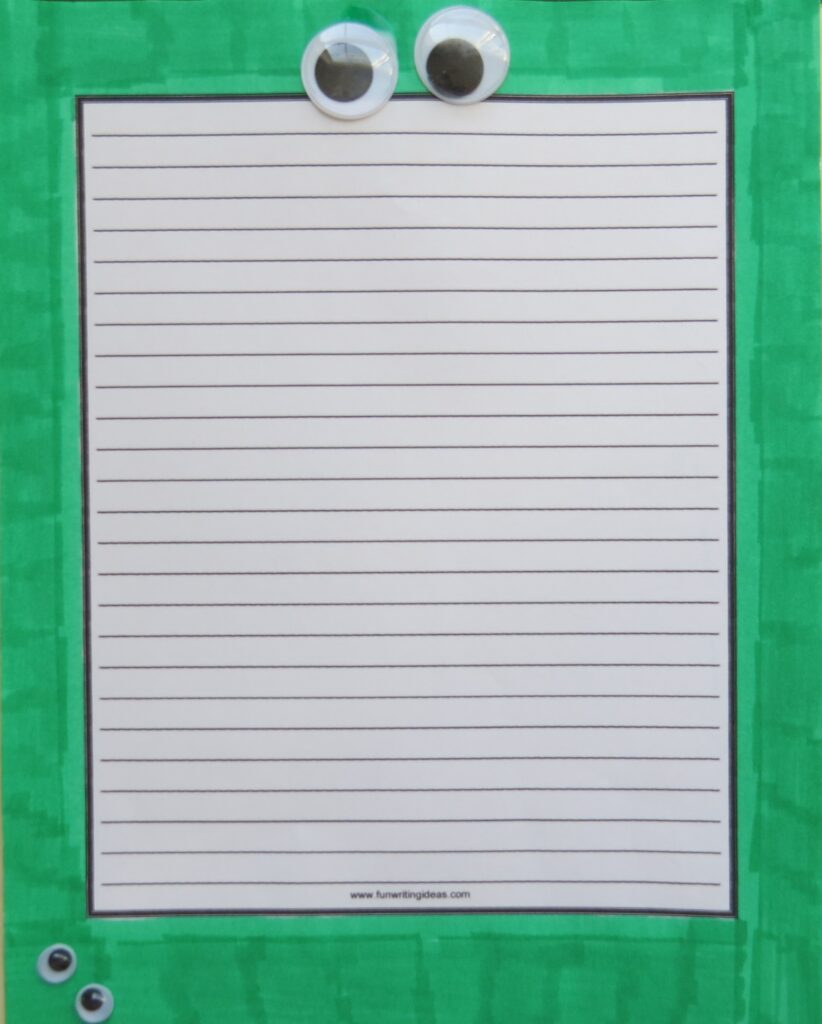
Anything can happen in these stories about grass!
The Grumpy Grass story is intended to be a Fictional News Article. However, a child’s story can easily be turned into Fantasy or Science Fiction story.
Other Art Accent Ideas
You may also be interested in these spring art accent ideas:
